#Clinopodium
Explore tagged Tumblr posts
Photo

Wild Basil Clinopodium vulgare Lamiaceae
Photograph taken on June 20, 2023, at Petroglyphs Provincial Park, Woodview, Ontario, Canada.
#wildflowers of southern ontario#wild basil#basil#purple#Clinopodium vulgare#Clinopodium#Lamiaceae#Petroglyphs Provincial Park#Woodview#Ontario#Canada#wildflowers#flowers#wildflower#flora
41 notes
·
View notes
Text

Clinopodium nepeta, lesser calamint, a fragrant and attractive member of the mint family Lamiaceae. Quite a nice little patch of it here!
0 notes
Text



wild basil..
an interesting "easy to grow" introduced plant...a tiny patch appearing out of nowhere...
155 notes
·
View notes
Text
My Garden Flowers Part 2
All photos mine. The narrow-leaved sundrops photo is edited for colour since the camera apparently can't reproduce that intense of a yellow. Neither can any Photopea editing, but at least it's closer. It's the bright of highlighter yellow but more golden.























In order of appearance:
031. Philadelphia fleabane (Erigeron philadelphicus) A welcome "weed" I couldn't find available at any of the native plant places in Ontario (one in Manitoba carried it but it wasn't available) but she planted herself.
032. Canadian Lettuce (Lactuca canadensis) Another welcome "weed" that sadly didn't manage to reseed, but maybe one will turn up again.
033-034. Jack-in-the-Pulpit male and female flowers (Arisaema triphyllum) The male has one leaf set while the female has two. The babies only have a leafset and no flowers for the first couple years of their lives. Then they reach sexual maturity as males, the next year they'll be female and switch back and forth until the end of their lives.
035. Early Meadow Rue (Thalictrum dioicum) Not pictured as she hasn't flowered yet. She's new. Hopefully next year.
036. Creeping Oregon Grape (Mahonia repens) First they gave me a non-native cinquefoil but thankfully rectified it by giving me two of these when I'd only ordered one. They've flowered before, but never so profusely as they both have this spring, and there are a number of berries ripening! They also made a baby from previous years, or else one of them suckered.
037. Three-Leaved Coneflower (Rudbeckia triloba) So...I planted her. She died. I swear she died, like root and all, she did not make the winter. Didn't come up in the spring. But now she is in several places! Managed to reseed herself? Perhaps. I don't recall that she flowered the year I planted her. Had dormant seeds in her pot with her? Coincidental present from squirrels? Either way, she's roughly in the spot I wanted her and is flowering well. Who cares how she got there?
038. Witherod Viburnum (Viburnum nudum cassinoides) Not pictured as she hasn't flowered yet. Hopefully next year!
039. Purple Milkweed (Asclepias purpurascens) Not pictured as she hasn't flowered yet. She's a new milkweed species for me! If she makes it through the summer and then the winter I should have more flowers to post in a year or two. :)
040. Rosy Pussytoes (Antennaria rosea) Not pictured as she hasn't flowered yet. Surviving, though, which is saying something because not even weeds grow there. It's a very dry spot and I've been kind of neutred from watering. But I read that she likes dry and that spot is dry. So good luck to her.
041. Prairie Alumroot (Heuchera richardsonii) Not pictured as she hasn't flowered yet. Also surviving in said very dry area.
042. Ramps (Allium tricoccum) I really hope her seeds made baby ramps! They only flower after reaching maturity at seven years, which is why it's bad when people come and uproot the lot of them. And I mean, they taste nice but not where I understand why people do that.
043. Spicebush (Lindera benzoin) My native allspice substitute! Her berries are currently developing and will be red in the fall. Still hoping to attract spicebush swallowtails one day.
044. Bigleaf Lupine (Lupinus polyphyllus) Was supposed to be sundial lupine but definitely isn't. There is disagreement between VASCAN and the USDA over whether there is a single variant of one subspecies of L. polyphyllus that's native to Ontario. This one stays in my garden until that's settled. Anyway, she's a gorgeous plant but the reason to avoid intentionally planting it in Ontario is that it easily hybridizes with sundial lupine. The hairstreak caterpillar can only eat true sundial lupine leaves. I don't know if the variant that the USDA says is native is a misidentified hybrid (bad, but also doesn't seem like it because the variant listed by the USDA is Lupinus polyphyllus ssp. polyphyllus var. polyphyllus) or just a well-behaved variant (fine, just like there's a native subspecies of Phragmites australis). But again, I'll be leaving mine in until I learn for sure, and I won't be planting sundial lupine there to avoid hybridization.
045. Sweet Joe-Pyeweed (Eupatorium purpureum) Fuzzy flowers! She can get very tall. I'm also finding out she's a slow spreader as there is an individual nearby that I didn't plant.
046. Tall Bluebells (Mertensia paniculata) She survived several years and seemed to do well, but she didn't come up this spring. I'll need to get another one and try a spot that's not quite so tough.
047. Poke Milkweed (Asclepias exaltata) Not pictured as she hasn't flowered yet. But this is her second year, so to judge by some of my other species she should do it next year!
048. Narrow-Leaved Sundrops (Oenothera fruticosa) No flowers I've seen are as intensely yellow as those in this genus, and narrow-leaved sundrops and evening primrose in particular seem to just glow.
049. Cup Plant (Silphium perfoliatum) The coolest part of this plant is in the name: the bases of her leaf stalks wrap around the flower stalk to make cups at the joints. Water settles there and birds come to drink. I haven't seen this happen yet, but I'm waiting. The flowers, however, are quite sizable, very pretty, and attract lots of bees. She gets tall like some common sunflower cultivars.
050. Canada Violet (Viola canadensis) She barely came back this year after doing well for several. I think it was just a dry winter, but the point is for them to be able to survive all seasons any year, so I'm going to try somewhere else.
051. Stinging Nettle (Urtica gracilis) I'm assuming, anyway. She planted herself in my garden at my former apartment and I potted and took her with me when I moved. She's been doing okay. And bitey. She's very bitey.
052. Zigzag Goldenrod (Solidago flexicaulis) I didn't plant that, so free native plant for me! She's also made babies.
053. Cutleaf Coneflower (Rudbeckia laciniata) Finally flowering this year!
054. Lowbush Blueberry (Vaccinium angustifolium) Not pictured as I haven't got pictures yet.
055. Highbush Blueberry (Vaccinium corymbosum) A cultivar, though I can't remember which. I try to avoid cultivars and get the wild type if I can, but it's not always possible and not all cultivars are bad.
056. Lance Selfheal (Prunella vulgaris lanceolata) Selfheal is a common garden weed but unobtrusive and makes cute purple flowers. Not to mention edible and medicinal uses! This one is the subspecies native to Ontario proper, whereas her close cousin is common up here but apparently only native to the northeastern United States bordering southern Ontario.
057. Dense Blazing Star (Liatris spicata) She's fuzzy. She's magenta purple. Bees love her. She's perfect.
058. Fairy Candle (Actaea racemosa) She's related to the baneberries and is herself poisonous but she does have some limited edible uses. And her delicate white flowerheads are lovely.
059. Star-Flowered Onion (Allium stellata) So glad I was able to get her before the place that sold her stopped shipping to my province. No one in my province carries this! But she is native, I have her, and she is an ever green plant that simply resumes growth as soon as the snow melts.
060. Wood Violet (Viola sororia) Other than V. odorata, which is invasive in North America, if you see the classic blue, purple, and white violets growing everywhere in the spring in North America it's probably this species. Yes, violets can actually be blue! Not the sky blue of forgetmenots, dayflowers, or bluebells, or the deep blue of lobelias, but blue.
#blackswallowtailbutterfly#my photos#photography#my garden#garden flowers#native plant gardening#native flowers of Carolinian Canada and USA#Erigeron philadelphicus#Lactuca canadensis#Arisaema triphyllum#Clinopodium vulgare#Mahonia repens#Rudbeckia triloba#Allium tricoccum#Lindera benzoin#Lupinus polyphyllus#Eupatorium purpureum#Mertensia paniculata#Oenothera fruticosa#Silphium perfoliatum#Viola canadensis#Urtica gracilis#Solidago flexicaulis#Rudbeckia laciniata#Vaccinium corymbosum#Prunella vulgaris lanceolata#Liatris spicata#Actaea racemosa#Allium stellata
11 notes
·
View notes
Text





#yerba buena#clinopodium douglasii#flowering herbs#microflora#california native plants#french broom#genista#wildflowers#seed cones#forest floor#sveadal#uvas canyon
2 notes
·
View notes
Note
time to dump a whole bunch of clanmew translations on you!!!!
Stemcurl- Prryemarreoopa, this is a really long one but I really like saying it for some reason. I imagine they would get a nickname like Squilf, but I could not for the life of me figure one out lmao
Dropletbreak- Kipimkerroch, technically this should probably be translated as Dropletshatter, but I prefer -break! it's meant to evoke that very first raindrop that splats right on your nose and makes you think 'well. it's definitely going to rain.'
Lightflood- Anelalm, there's not a specific word for flood, but I think -wave works pretty well here!
Basilsnap/star- Mwelkaygurga/Mwelshai, so apparently basil doesn't grow naturally in the UK??? you learn something new every day, I guess? anyways I just replaced it with spearmint, since it's in the same family and looks at least a little bit similar.
Shadedance- Horrlshigashig, the 'danced' here isn't exactly what I wanted? I was looking more for a 'trembled/swayed,' since his name is supposed to be like the shadows of leaves on the forest floor, but I couldn't find anything in the 'movement' semantic field...
Flickerfate- Swarfssamep/Swarforrmep, these (to me) would be translated the same way in English, but they have very different meanings. 'fate' as a suffix is a bit of a weird one, but it was originally granted as an Honor Title due to their affinity to see omens in fires; it eventually turned into a Dishonor Title for fun story reasons that I won't bore you with lol.
Nacreclaw- Solyskkachit, this one is... interesting. There's no word in Clammew for nacre (probably because they don't live by the sea and wouldn't see it), so I attempted to combine 'solyss' and 'sek' into a sort of compound word, and ended up with 'solysk,' so, there we go?
Oh I love these, absolute MVP goes to Dropletbreak, that's such a neat image! On Prryemarreoopa, I think that a good nickname would be Prryoo. It takes a piece from both the prefix and suffix, and keeps that "fun to say" vibe from the full name.
New words;
Flood = Worrl Translates directly. (Note: a syke, mawss, is a stream that floods seasonally.)
Basil (Clinopodium vulgare) = Pomba (Heart + Flower) An important astringent, used to speed up heartrate, help a cat cough up phlegm, and even treat mild infection. In times of excess, it's even used for making yellow dye! Has orchid-like, delicate little purple flowers. You were probably looking at the wrong type of basil! Basils in the family Ocimum (such as sweet basil) don't grow in the UK, this is the historic type of basil used as medicine.
Plant Movements
I think I see what you're looking for with Shadedance, and this is a good area to expand in I think. I'm going to give you a bunch of words for the movement of plants, from the perspective of Clan cats.
Twanged/Twanging/Will Twang = Ookooau/Ookooa/Ookoo SPECIFICALLY the unnatural movement a plant makes when an animal interacts with it. It's the tremble of a branch as a squirrel runs on it, or the bow of a flower when a fat bee grabs it, or the spring of a twig that a sparrow perches on. A plant that is bearing the weight of a creature.
Rolled-Together/Rolling-Together/Will-Roll-Together = Shalalshe/Shalashe/Shalshe AN IRREGULAR STEM, watch out! The wave-like movement of wall grass as it bends with the wind. Also used metaphorically, for when you ALL move together. "SHALSHE!" is a full sentence on its own, a command, that the entire group you're referring to should move as one.
Sway = Hayyssassa/Hayyssass/Hayyssa The gentle movement of plants in wind.
Tattled/Tattled/Tattling = Cha'ha'hach/Cha'ha'ha/Cha'ha The odd, irregular dancing of rain or hail on leaves or roofing. Like English, this word can also be used for "telling on someone" or "giving something hidden away," because you may not know it is raining except for the tattle of the den above you. Also used by tunnelers when they could tell something was above them, based on the sound of pawsteps.
Rattle = Shewshioo/Shewshi/Shewsh The violent shaking of leaves and branches under high winds; arbitrarily different from "sway" from the fact that it makes listening difficult and stops the singing of birds.
Collapsed-Swayed/Collapsing-Sway/Will-Collapse-Will-Sway = Goorraoa/Goorrao/Goorra WHEN THE WIND IS SO STRONG IT'S MAKING THE TRUNKS GROAN. VERY powerful word, because it will also describe the sway of the roots in the ground as they're pulled by the tree. The ground might literally dance. Also applied emotionally to a cat whose "world is shaken," swaying as if they might collapse, from news so powerful it's making them dizzy. I don't know how to put the power of this word into English so I just made it red lmao. The grass it-bows-together, the oak it-collapes-sways. I would use this for Honor Titles.
Rustle = Kish The sound plants with leaves make when shaken. Compare to Russ, the word for leaves AND the sound they make when wind gently passes through them. A bonus for you.
#Clanmew#DANCING around being straightforward with dances for now#Simply because I am actually really impressed and amused with how people translate it when Shigashig doesn't quite fit#I find it's actually a constriction on creativity that really pays off#People will describe it as swirling. Or jumping. Or skipping...#And in a way that's even more beautiful than straightup like giving a word for jigs vs gavots#I might add them at some point but at the moment I am actually very much enjoying seeing what people come up with#And am trying to add more interesting Clanmew verbs that don't even have equivalents in English
40 notes
·
View notes
Text

C – Clinopodium vulgare L. – Clinopodio dei boschi (Lamiaceae)
51 notes
·
View notes
Text
#spezie#spices#tumblr italia#italy#rosmarino#salvia#alloro#cumino#chiodi di garofano#origano#prezzemolo#timo#mentuccia#noce moscata#ill be honest im hoping for a specific one to pull out a vanillasweep#i was today years old when i found out that 1. la mentuccia è romana? o c'e una pianta specifica che è la variante romana lol#e 2. la traduzione in inglese non è stabilita? idk#weird
27 notes
·
View notes
Link
1 note
·
View note
Link
1 note
·
View note
Photo










I’ve really come to appreciate and cherish the wildness and solitude of Snake Wildlife Management Area. Safely away from the tourist mobs and day hikers that choke the state forest trails on the opposite side of the canyon, I get this lovely place entirely to myself on some evenings. Not completely so this past Saturday, but close enough. The summer wildflowers were in beautiful form during my hike over the weekend (from top): white bergamot (Monarda clinopodia); common milkweed (Asclepias syriaca) attended by a great spangled fritillary (Speyeria cybele); black cohosh (Actaea racemosa); common self-heal (Prunella vulgaris), an edible and nutritious summer mint; wild basil (Clinopodium vulgare), yet another edible summer mint; Indian pipe (Monotropa uniflora), a parasitic plant; eastern teaberry (Gaultheria procumbens); scarlet beebalm (Monarda didyma); black-eyed Susan (Rudbeckia hirta), replete with an adorable inchworm; and great rhododendron (Rhododendron maximum), just getting to peak in the canyon.
#appalachia#vandalia#west virginia#flora#summer#wildflowers#white bergamot#monarda#common milkweed#asclepias#black cohosh#actaea#common self-heal#prunella#wild basil#clinopodium#indian pipe#monotropa#eastern teaberry#gaultheria#scarlet beebalm#black-eyed susan#rudbeckia#great rhododendron#butterfly#lepidoptera#great spangled fritillary#speyeria#snake hill wildlife management area#cheat canyon
42 notes
·
View notes
Text

Wild Basil Clinopodium vulgare Lamiaceae
Photograph taken on July 21, 2023, at Mono Cliffs Provincial Park, Mono, Ontario, Canada.
#wildflowers of southern ontario#wild basil#basil#Clinopodium vulgare#Clinopodium#Lamiaceae#Mono#Mono Cliffs#Mono Cliffs Provincial Park#provincial park#Ontario#Canada#wildflowers#wildflower#purple#violet#flora#flowers
16 notes
·
View notes
Photo

Clinopodium mimuloides
This California native is found along creeks in California’s Coast Ranges, from Monterey County southward to the San Gabriel Mountains north of L.A. It was formerly placed in Satureja, the genus to which savory belongs. Both are members of the mint family, Lamiaceae.
-Brian
10 notes
·
View notes
Text
My Garden Flowers Part 3
All photos mine. The small buttercup and evening primrose are edited for colour since the camera didn't catch it and washed it out.
In order of appearance:
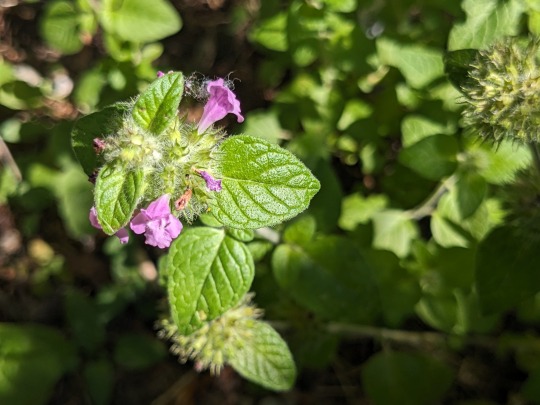
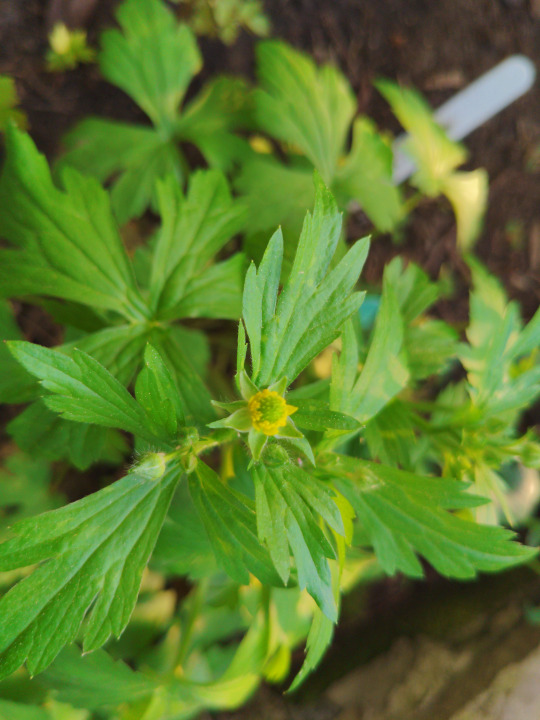


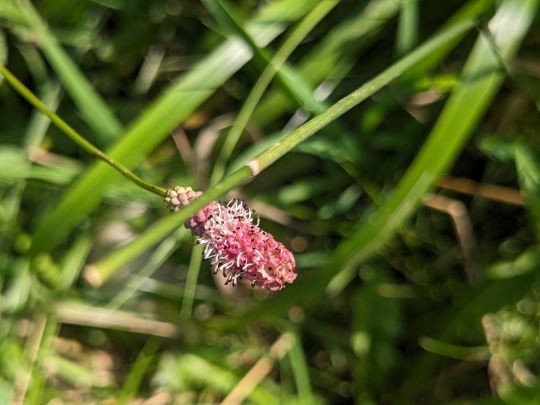



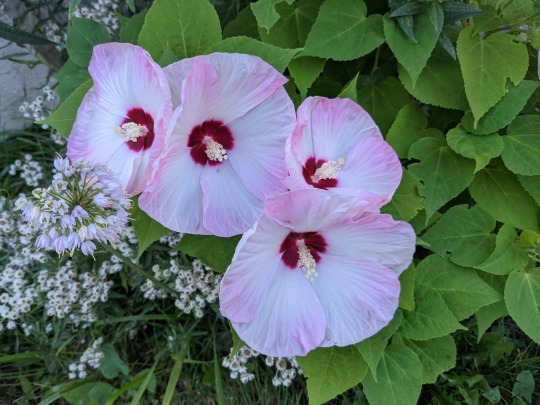
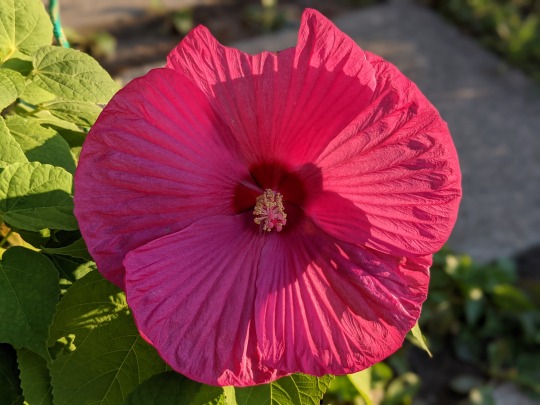
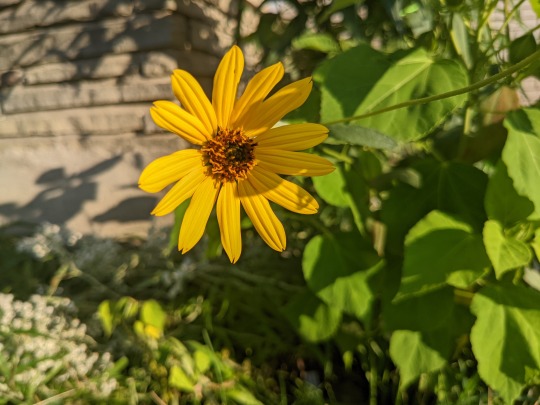

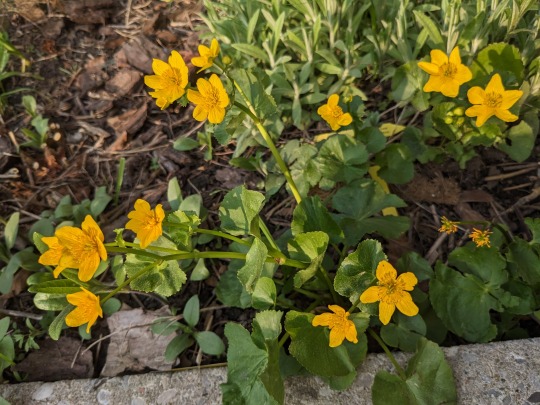

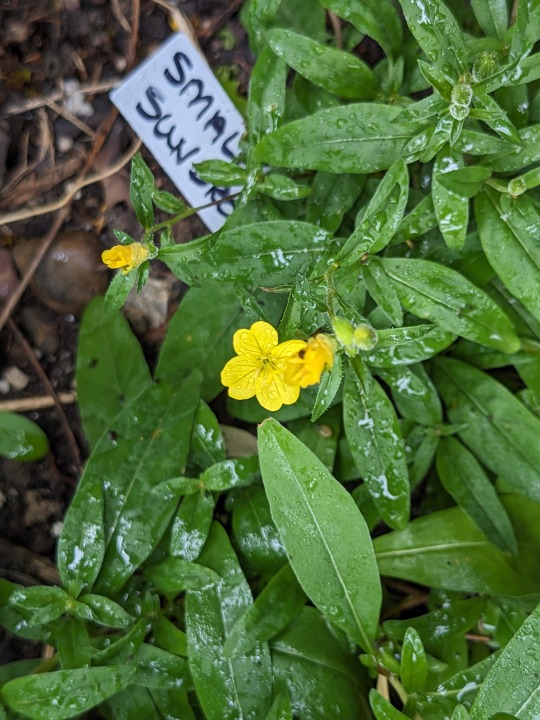

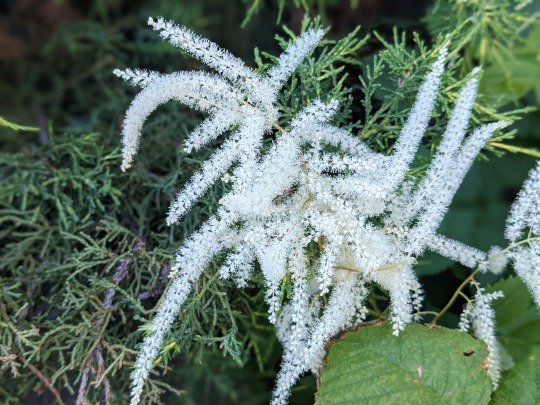
In order of appearance:
061. Wild Basil (Clinopodium vulgare) Didn't do so well the last place I had her in, but she seems happy in this spot, so fingers crossed.
062. Crested Iris (Iris cristata) Not pictured as she hasn't flowered yet.
063. Smallflower Buttercup (Rancunculus abortivus) Not much to look at compared with other buttercups but one of the only native buttercups with (limited) edible uses.
064. Smooth Solomon's Seal (Polygonatum biflorum) Not pictured as she hasn't flowered yet. Soon, hopefully!
065. False Solomon's Seal (Maianthemum racemosa) Not pictured as she hasn't flowered yet, but she's growing well so hopefully next year.
066. Blisterwort (Ranunculus recurvatus) I didn't plant that. She just turned up last year. Not pictured as I haven't got any pictures yet.
067. Fairy Spuds (Claytonia virginica) Not pictured as she hasn't flowered yet. She's a wee little spud in the ground.
068. Flowering Dogwood (Cornus floridus) Not pictured as she hasn't flowered yet but she is slowly spreading out.
069. Plantain-Leaf Sedge (Carex plantaginea) Not pictured as I haven't got pictures yet. I should. It's a neat plant. Evergreen, too!
070. Virginia Bluebells (Mertensia virginica) One of the prettiest plants I've ever seen, from the shape and texture of the leaves to the purplish pink buds to the bright blue bell-shaped flowers. They're spring ephemerals, though, so they're long gone by now. But will emerge next spring!
071. Evening Primrose (Oenothera biennis) Only lives for two years and reseeds itself. It's a common weed along sidewalks, but its flowers glow yellow in the evening and often remain in bloom at night.
072. Squirrel Corn (Dicentra canadensis) Not pictured as she hasn't flowered yet. The leaves are really cute, though.
073. Large Toothwort (Cardamine maxima) Not pictured as she hasn't flowered yet.
074. Wintergreen (Gaultheria procumbens) Not pictured as I haven't got any pictures yet.
075. Great Burnet (Sanguisorba officinalis) A cultivar, not sure which one. I'll get the wild type if/when I can.
076. American Plum (Prunus americana) I was not expecting her to flower this year! Hopefully she will next year too, and without aphids this time so I can have some plums. :)
077. Smooth Aster (Symphyotrichum laeve) So like I said, I do think New England asters are the prettiest of this genus, but smooth asters are very nice in their own way. Tender bluish leaves, and delicate light purple flowers.
078. Sweet Grass (Hierochloe odorata) Not pictured as I haven't got any pictures yet. She only flowered one year. Hasn't since. I won't miss a photo next time.
079. Nodding Onion (Allium cernuum) What's better than pretty flowers? Tasty pretty flowers!
080-081. Swamp Rose Mallow (Hibiscus moscheutos) Two different cultivars and the red one has died, but I did get my hands on the wild type! That will hopefully bloom this year.
082. Stiff Sunflower (Helianthus pauciflorus subrhomboideus) Holds her own against the much more aggressive Nuttall's sunflower. Sometimes called beautiful sunflower. I don't know how one decides which species of a very showy genus gets that name, but I guess she won out.
083. Pearly Everlasting (Anaphalis margaritacea) Another one that was hard to choose a photo of. You just hardly believe they're real!
084. Marsh Marigold (Caltha palustris) I planted her where there's a drip from the eavestrough so she can get very wet when it rains. :) She is not a marigold but instead part of the buttercup family.
085. Nuttall's Sunflower (Helianthus nuttallii) Whenever I am expressing frustration about sunflowers, it is almost always this species. lol Very beautiful but very aggressive.
086. Larkspur Violet (Viola pedatifida) Not pictured as she hasn't flowered yet.
087. White Turtlehead (Chelone glabra) Not pictured as she hasn't flowered yet.
088. Small Sundrops (Oenothera perennis) Not quite as intensely yellow as some of her relatives but still very bright.
089. Bigleaf Aster (Eurybia macrophylla) You generally grow her for foliage rather than her flowers, but flowering she is! Very drought-tolerant, but spreads more readily in less harsh conditions.
090. Bride's Feathers (Aruncus dioicus) Southern Ontario and surrounding area's evolution really went off on the lacy white flowers, and this species' flowers might be the laciest of them all.
#blackswallowtailbutterfly#my photos#photography#my garden#garden flowers#native plant gardening#native flowers of Carolinian Canada and USA#Viola sororia#Rancunculus abortivus#Mertensia virginica#Oenothera biennis#Sanguisorba officinalis#Prunus americana#Symphyotrichum laeve#Allium cernuum#Hibiscus moscheutos#Helianthus pauciflorus subrhomboideus#Anaphalis margaritacea#Caltha palustris#Helianthus nuttallii#Oenothera perennis#Aruncus dioicus
11 notes
·
View notes
Text







#lesser calamint#clinopodium nepeta#calamintha nepetoides#flowering herbs#microflora#purple coneflower#echinacea purpurea#hydrangea#battery park#the battery#nyc
1 note
·
View note
Text

Not 100% certain due to slightly blurry photo, but I think this is Clinopodium vulgare, wild basil.
#Bruce Trail#Peninsula Section#Niagara Escarpment#Bruce Peninsula#Bruce Peninsula National Park#National Park#Bruce County#Ontario#Canada#Great Lakes#Georgian Bay#Lake Huron#hiking#hiking trail#Halfway Dump to Crane Lake#photography#forest#outdoors#Clinopodium vulgare#wild basil#flora#plant#vegetation#flowers#blossoms#digital photography#DSLR#Canon 6D#photographers on Tumblr
0 notes